The traditional ecuadorian Fanesca

SOLEQMASTER
A typical dish that you can enjoy only here in Ecuador. Fanesca is a delicious soup made of cooked tender legumes, especially prepared at Easter.
Although Easter was a while ago this year, we don’t want to deprive you of this delicious dish.
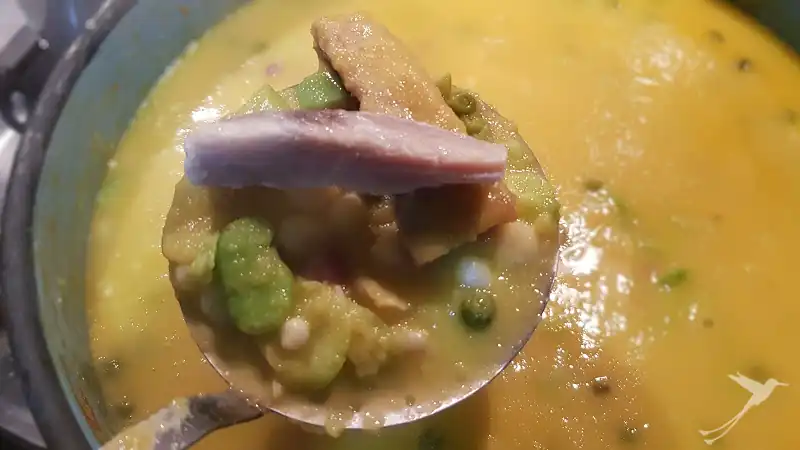
History of the Fanesca.
In Latin America, it is undoubtedly very easy to find a variety of grains and legumes. It is said that already in ancient times grains were cooked in water, and this is the origin of what we call soup today. The preparation begins with the selection of the legumes, the last point is the tasting, which takes at least a day. Because it is recommended to cook the legumes a day before and do it separately, that is, variety by variety. It will indeed take time and effort, and therefore it is a good reason to make it as a family, together on Good Friday, when grandparents, aunts and uncles, cousins, nephews, nieces and grandchildren get together.
This dish is healthy and also very tasty for vegetarians.
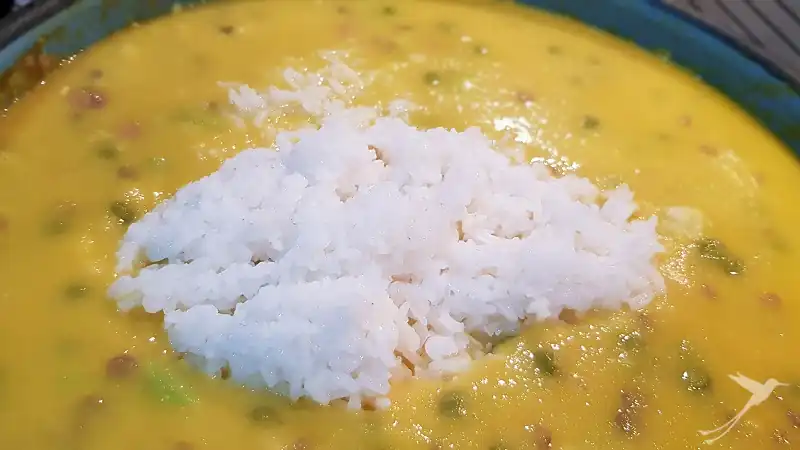
Tender legumes
According to legend, this tasty delicacy should contain at least 12 different types of tender legumes representing the 12 apostles, which is why it is traditionally prepared only during Catholic Holy Week. The main ingredients include: Peas, squash, broad bean, cayote (zambo), corn (choclo), Andean lupine (chocho), rice, olluco (melloco), mote, chickpeas, lentils, various types of beans, and last but not least, cod (vegetarians can leave it out, it still tastes excellent). Some people also use peanut butter.
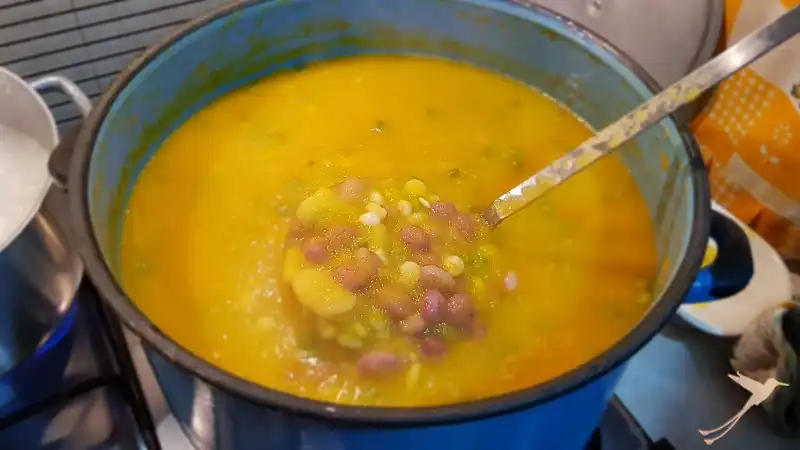
Preparation
As mentioned above, cook separately all the ingredients that will be part of the fanesca. You can start with those that take longer to cook, for example, the corn. Then, in a large pot, cook the small pieces of cayote and squash. When they are almost cooked, add the previously sautéed spices: chopped white onion, salt to taste, achiote, garlic. Then add the previously cooked beans and milk. By the way, they say that the secret to get a consistent fanesca is to stir constantly so that it does not stick or settle or even burn.
Note: To prepare a pot for 8 to 10 people, I recommend buying 1 pound of each type of legume and using a liter of whole milk.
Decoration
Dumplings, boiled egg pieces and fried plantains are used for decoration.
One activity that can be assigned to the youngest members of the household is making the dumplings.
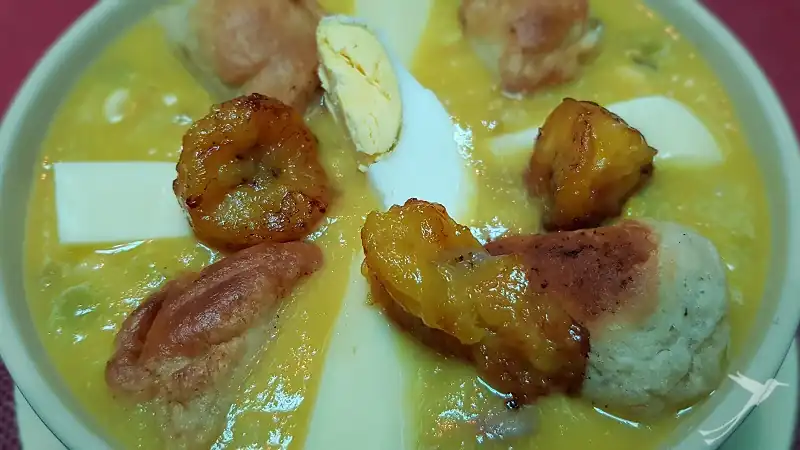
Preparation of the dumplings
Put one and a half cups of cornmeal on a board or place to knead, add a pinch of salt and a pinch of sugar, add two tablespoons of butter or lard and mix everything together. Then gradually add water and knead until the dough is firm and no longer sticks to your hands. Then let the dough rest for 10 minutes and start preparing the dumplings: Take small pieces of dough, knead them and form them into small balls, or you can also make small pastries. Finally, with the help of an adult, they are deep fried in hot oil in the kitchen.
Molo
It’s like a mashed potato, but thicker. This is the name given to this particular side dish to fanesca. It consists in boiling peeled potatoes, draining the water, mashing the potatoes and adding milk, butter and salt to taste. With the help of a spoon mix everything and gradually add a little milk and achiote. It is common to serve the side dish with lettuce and decorate with cheese cubes, hard-boiled egg and a sprig of parsley, placing each serving on a fresh lettuce leaf.
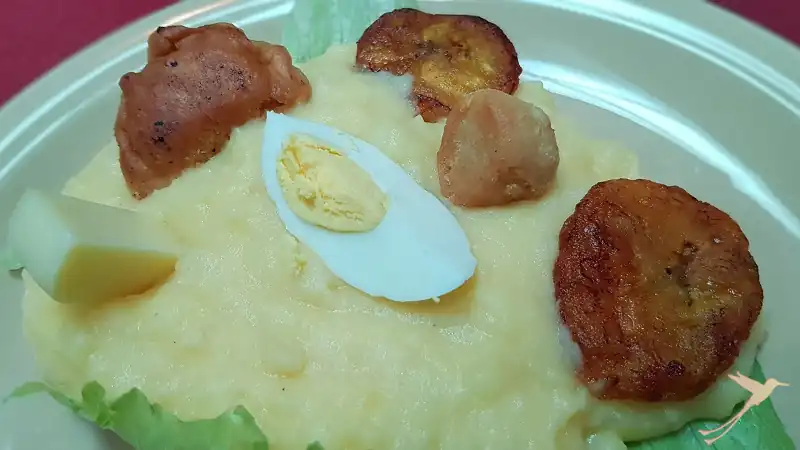
Dessert is a must. It is common to serve fanesca with various desserts such as figs with cheese or rice pudding.
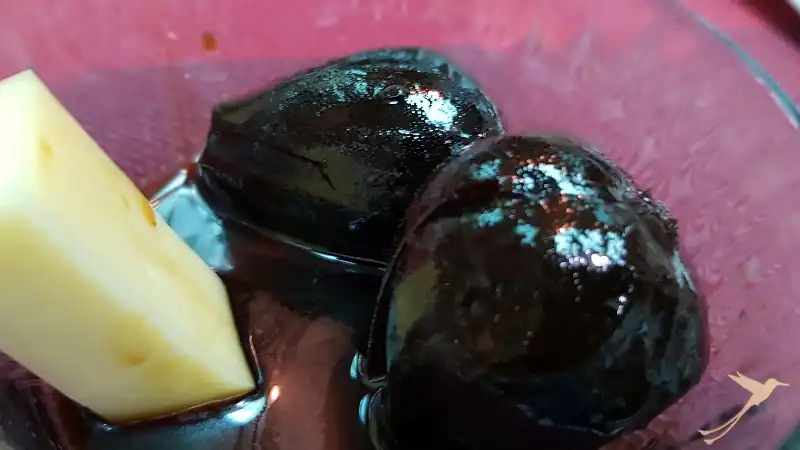
Enjoy it and spend a happy Holy Week with your family.
visit our other channels
Recent Posts
- From Manglaralto to Pacoche and surroundings April 18, 2024
- Excursions within the rainforest region of Ecuador April 5, 2024
- Ecuador in a state of emergency?! My personal experience March 22, 2024
- The 10 most beautiful lakes and lagoons in Ecuador – Part 2 March 12, 2024
- The 10 most beautiful lakes and lagoons in Ecuador – Part 1 February 23, 2024